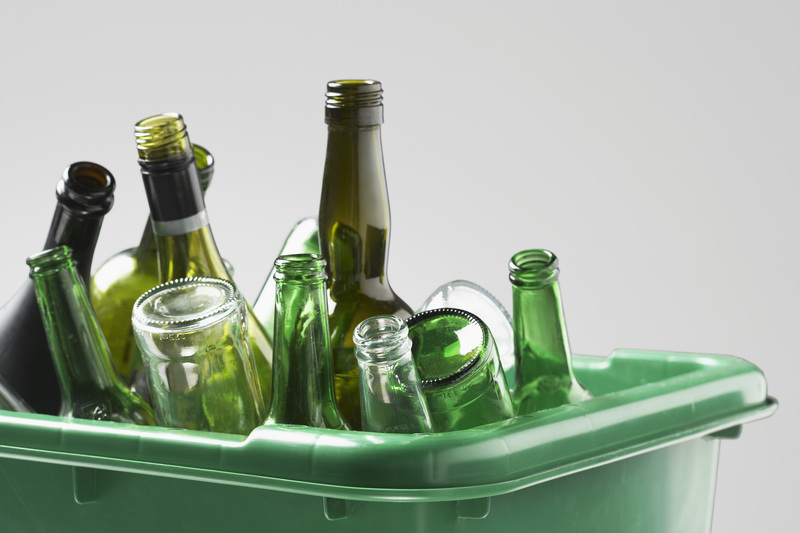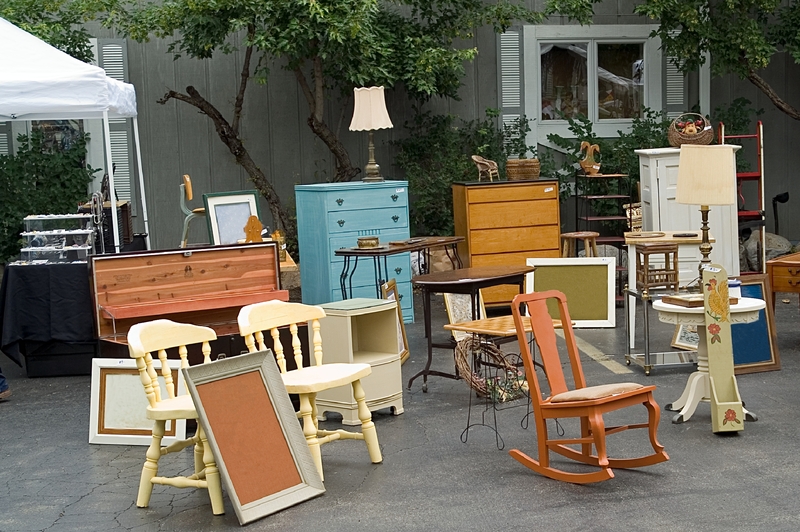What to Do With Worn-Out Pots and Pans in a Green Way
Every home chef eventually faces the same dilemma: what to do with worn-out pots and pans when they're no longer safe or practical for cooking? Instead of tossing them in the trash, learning sustainable ways to dispose of or repurpose your old cookware not only benefits the environment but also inspires creativity. This comprehensive, eco-friendly guide will help you explore the best practices for handling outdated, damaged, or battered pots and pans in a green, responsible manner.

Why Sustainable Disposal of Old Cookware Matters
Before delving into eco-friendly methods for getting rid of old cookware, it's important to understand why these steps matter. Most pots and pans contain metals like aluminum or steel, sometimes coated with non-stick surfaces or made from cast iron. If thrown into landfills, these materials can take years to decompose or may even leach harmful substances. By seeking green alternatives, you participate in conserving resources, reducing landfill waste, and potentially giving new life to your tired kitchen tools.
The Environmental Impact of Throwing Away Cookware
- Non-biodegradable materials contribute to landfills
- Metal mining and fabrication are resource-intensive
- Chemicals from coatings (like Teflon) can contaminate soil and water
- Loss of potential for reuse and recycling
Step-by-Step Guide: Green Solutions for Old Pots and Pans
1. Assess the Condition of Your Old Cookware
First, evaluate if your used pots and pans can continue serving a practical purpose:
- Slightly worn or scratched? - Some items might be refurbished or re-seasoned, particularly cast iron or stainless steel pans.
- Damaged coatings? - Non-stick cookware with deep scratches or peeling should not be reused for cooking, but may still be useful elsewhere.
- Heavily warped, cracked, or rusted? - These should be retired from the kitchen and handled using the methods outlined below.
2. Donate Usable Cookware
If your gently used pots and pans still have life left, consider donating them. This option extends their usefulness and supports community organizations.
- Contact local shelters or food banks
- Offer on community trading apps or websites
- Check with schools, churches, or community centers
Tip: Be transparent about any minor flaws, and ensure they're thoroughly cleaned before donating.
3. Recycle Metal Cookware Responsibly
Recycling is one of the greenest options for pots and pans made of metal (aluminum, copper, stainless steel, or cast iron). Here's how:
- Research local scrap yards or recycling centers: Many accept cookware for metal recycling. Some even pay for metals like copper or aluminum.
- Remove non-metal parts: Detach handles, lids, or knobs made of plastic or wood, as these may not be recyclable.
- Check with curbside programs: Some municipalities allow small household metal items in curbside recycling, but always confirm before including them.
Things to Remember:
- Non-stick pans must have coatings removed prior to recycling as scrap metal
- Glass cookware (like Pyrex) usually cannot be recycled in standard glass bins--check with local facilities for special instructions
4. Creative Upcycling: Give Old Pots and Pans New Purpose
Not all worn-out cookware needs to leave your home. With a bit of inspiration, you can transform them into practical or decorative items:
- Planters: Turn deep pots or saucepans into quirky flower pots or herb gardens. Be sure to drill drainage holes in the bottom for healthy plants.
- Storage Solutions: Use frying pans as wall-mounted shelves or magnetic racks for organizing tools, spices, or toys.
- Art Projects: Paint or mosaic old cookware for garden art, wind chimes, or bird baths.
- Serving Trays: Large, flat pans can be upcycled into rustic serving trays for indoor or outdoor entertaining.
Upcycling not only saves energy and resources but also adds a unique touch to your home or garden.
5. Return to Manufacturer: Take-Back and Recycling Programs
Certain cookware brands offer take-back or recycling initiatives. Companies like TerraCycle or some premium manufacturers (e.g., Calphalon, GreenPan) periodically run programs to safely recycle old kitchenware. Check the brand website or customer service for details on eligibility and participation.
Can Non-Stick Pots and Pans Be Recycled?
This is one of the most common questions when it comes to handling old non-stick pans in an eco-friendly way. Unfortunately, non-stick coatings like Teflon can complicate the recycling process. Most recycling centers require the coating to be removed because it can contaminate the metal recycling stream. Here's what you can do:
- Check if your local scrap yard accepts non-stick pans as-is
- If not, see if they accept the pan once the coating is stripped (some workshops may help with this for a fee)
- Participate in manufacturer-run recycling schemes--some brands collect non-stick items and ensure they're processed safely
When in doubt, contact your local recycling authority for specific guidance on environmentally friendly disposal of non-stick cookware.
Alternative Eco-Friendly Disposals for Decrepit Cookware
1. Compost Wooden Handles or Accessories
If your cookware features wooden parts, compost them if untreated. Chop large handles or knobs into smaller pieces for quicker decomposition. Avoid if wood is varnished or painted, as these coatings can introduce toxins.
2. Sell Scrap Metal for a Return
Some metals from old pots and pans have value as scrap. If donating or upcycling isn't suitable, selling for scrap (especially copper or cast iron) is a green way to let the metals be smelted and reused in manufacturing. These items are especially sought after by local scrap dealers and recyclers.
3. Offer for Parts or Repair
Even heavily used cookware may have functioning components that are valuable to others. Offer online or in community repair groups. Handy hobbyists or local repair shops may use handles, lids, or sturdy metal bodies in refurbished products or DIY projects.
How to Maintain Pots and Pans for a Longer Life
One of the greenest approaches is to extend the usability of what you already own. Proper care and maintenance can reduce the frequency of disposal and need for replacement:
- Avoid overheating non-stick pans to prevent premature breakdown of coatings
- Hand wash pans instead of using the dishwasher
- Re-season cast iron regularly to prevent rust
- Use wooden or silicone utensils to avoid scratching metal surfaces
- Repair loose handles, where possible, rather than discarding
*Longer life means less waste and fewer resources needed for new items*
Green Habits Moving Forward: Eco-Conscious Cookware Purchasing
When it's finally time to invest in new pots and pans, making sustainable choices up front ensures the entire life cycle has less environmental impact:
- Choose brands known for sustainable manufacturing practices
- Favor materials with recyclable content (cast iron, stainless steel, copper, pure aluminum)
- Look for cookware designed for easy repair and parts replacement
- Minimize non-stick where possible, or choose newer PTFE/PFOA-free coatings
- Support companies running take-back or recycling programs
Remember, the greener your purchase, the simpler end-of-life disposal will be in the future.

Frequently Asked Questions on Green Disposal of Cookware
Can I throw my old frying pan in the recycling bin?
Usually, this depends on local recycling policies. Metal pans may be accepted at scrap metal centers, but many curbside programs don't accept cookware due to metals' melting points or attached coatings. Always check first with your local recycling authority.
Are old pots and pans safe for garden planters?
Yes! As long as you drill holes for drainage, clean them well, and ensure coatings aren't flaking or toxic, using cookware as planters is a creative, eco-friendly upcycling solution.
Is it OK to donate pans with some scratches or stains?
If the pan is not warped and doesn't feature peeling or flaking non-stick coating, many organizations or individuals will accept them. Always clean thoroughly and mention imperfections.
Conclusion: Greener Solutions for Worn-Out Pots and Pans
In a world increasingly aware of the impact of waste, finding green ways to handle old pots and pans is a practical, beneficial step for every household. Whether you choose to recycle, donate, upcycle, or participate in manufacturer take-back programs, these solutions not only help the planet but can invigorate your home and gardening projects. Remember--discarding cookware doesn't have to mean tossing it into a landfill. With a bit of thought and creativity, your trusty old skillet or saucepan can continue to serve a worthy new purpose.
Embrace sustainability in your kitchen and inspire others to do the same. Your green choices today shape a healthier planet tomorrow--one pot or pan at a time.